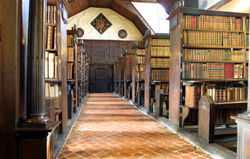History of libraries
The history of libraries began with the first efforts to organize collections of documents. Topics of interest include accessibility of the collection, acquisition of materials, arrangement and finding tools, the book trade, the influence of the physical properties of the different writing materials, language distribution, role in education, rates of literacy, budgets, staffing, libraries for specially targeted audiences, architectural merit, patterns of usage, and the role of libraries in a nation's cultural heritage, and the role of government, church or private sponsorship. Since the 1960s issues of computerization and digitization come to the fore.
Library history is the academic discipline devoted to the study of the history of libraries; it is a subfield of library science and historiography.
Early libraries
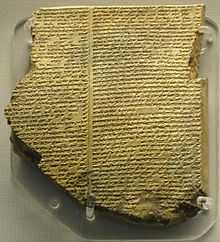
The first libraries consisted of archives of the earliest form of writing—the clay tablets in cuneiform script discovered in temple rooms in Sumer,[1][2] some dating back to 2600 BC.[3] These archives, which mainly consisted of the records of commercial transactions or inventories, mark the end of prehistory and the start of history.[4][5]
Things were much the same in the government and temple records on papyrus of Ancient Egypt.[2] The earliest discovered private archives were kept at Ugarit; besides correspondence and inventories, texts of myths may have been standardized practice-texts for teaching new scribes. There is also evidence of libraries at Nippur about 1900 BC and those at Nineveh about 700 BC showing a library classification system.[6]
Over 30,000 clay tablets from the Library of Ashurbanipal have been discovered at Nineveh,[7] providing modern scholars with an amazing wealth of Mesopotamian literary, religious and administrative work. Among the findings were the Enuma Elish, also known as the Epic of Creation,[8] which depicts a traditional Babylonian view of creation, the Epic of Gilgamesh,[9] a large selection of "omen texts" including Enuma Anu Enlil which "contained omens dealing with the moon, its visibility, eclipses, and conjunction with planets and fixed stars, the sun, its corona, spots, and eclipses, the weather, namely lightning, thunder, and clouds, and the planets and their visibility, appearance, and stations",[10] and astronomic/astrological texts, as well as standard lists used by scribes and scholars such as word lists, bilingual vocabularies, lists of signs and synonyms, and lists of medical diagnoses.
Philosopher Laozi was keeper of books in the earliest library in China, which belonged to the Imperial Zhou dynasty.[11] Also, evidence of catalogues found in some destroyed ancient libraries illustrates the presence of librarians.[11]
Classical period
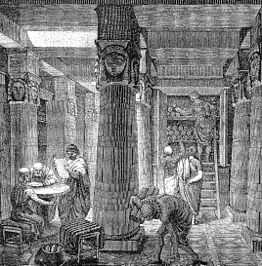
The Library of Alexandria, in Egypt, was the largest and most significant great library of the ancient world.[12] It flourished under the patronage of the Ptolemaic dynasty and functioned as a major center of scholarship from its construction in the 3rd century BC until the Roman conquest of Egypt in 30 BC. The library was conceived and opened either during the reign of Ptolemy I Soter (323–283 BC) or during the reign of his son Ptolemy II (283–246 BC).[13] An early organization system was in effect at Alexandria.[13]
The Library of Celsus in Ephesus, Anatolia, now part of Selçuk, Turkey was built in honor of the Roman Senator Tiberius Julius Celsus Polemaeanus[14][15] (completed in 135 AD) by Celsus’ son, Gaius Julius Aquila (consul, 110 AD). The library was built to store 12,000 scrolls and to serve as a monumental tomb for Celsus. The library's ruins were hidden under debris of the city of Ephesus that was deserted in early Middle Ages. In 1903, Austrian excavations led to this hidden heap of rubble that had collapsed during an earthquake. The donator's son built the library to honor his father's memory and construction began around 113 or 114 AD. Presently, visitors only see the remains of the library's facade.[16]
Private or personal libraries made up of written books (as opposed to the state or institutional records kept in archives) appeared in classical Greece in the 5th century BC. The celebrated book collectors of Hellenistic Antiquity were listed in the late 2nd century in Deipnosophistae. All these libraries were Greek; the cultivated Hellenized diners in Deipnosophistae pass over the libraries of Rome in silence. By the time of Augustus there were public libraries near the forums of Rome: there were libraries in the Porticus Octaviae near the Theatre of Marcellus, in the temple of Apollo Palatinus, and in the Bibliotheca Ulpiana in the Forum of Trajan. The state archives were kept in a structure on the slope between the Roman Forum and the Capitoline Hill.
Private libraries appeared during the late republic: Seneca inveighed against libraries fitted out for show by illiterate owners who scarcely read their titles in the course of a lifetime, but displayed the scrolls in bookcases (armaria) of citrus wood inlaid with ivory that ran right to the ceiling: "by now, like bathrooms and hot water, a library is got up as standard equipment for a fine house (domus).[17] Libraries were amenities suited to a villa, such as Cicero's at Tusculum, Maecenas's several villas, or Pliny the Younger's, all described in surviving letters. At the Villa of the Papyri at Herculaneum, apparently the villa of Caesar's father-in-law, the Greek library has been partly preserved in volcanic ash; archaeologists speculate that a Latin library, kept separate from the Greek one, may await discovery at the site.
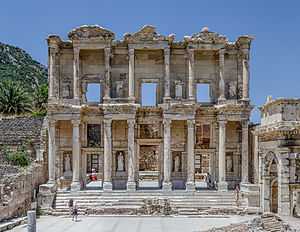
In the West, the first public libraries were established under the Roman Empire as each succeeding emperor strove to open one or many which outshone that of his predecessor. Rome’s first public library was established by Asinius Pollio. Pollio was a lieutenant of Julius Caesar and one of his most ardent supporters. After his military victory in Illyria, Pollio felt he had enough fame and fortune to create what Julius Caesar had sought for a long time: a public library to increase the prestige of Rome and rival the one in Alexandria.[18] Pollios’s library, the Anla Libertatis,[19] which was housed in the Atrium Libertatis, was centrally located near the Forum Romanum. It was the first to employ an architectural design that separated works into Greek and Latin. All subsequent Roman public libraries will have this design.[20] At the conclusion of Rome’s civil wars following the death of Marcus Antonius in 30 BC, the Emperor Augustus sought to reconstruct many of Rome’s damaged buildings. During this construction, Augustus created two more public libraries. The first was the library of the Temple of Apollo on the Palatine, often called the Palatine library, and the second was the library of the Porticus of Octaviae[21]
Two more libraries were added by the Emperor Tiberius on Palatine Hill and one by Vespasian after 70 AD. Vespasian’s library was constructed in the Forum of Vespasian, also known as the Forum of Peace, and became one of Rome’s principal libraries. The Bibliotheca Pacis was built along the traditional model and had two large halls with rooms for Greek and Latin libraries containing the works of Galen and Lucius Aelius.[22] One of the best preserved was the ancient Ulpian Library built by the Emperor Trajan. Completed in 112/113 AD, the Ulpian Library was part of Trajan’s Forum built on the Capitoline Hill. Trajan’s Column separated the Greek and Latin rooms which faced each other.[23] The structure was approximately fifty feet high with the peak of the roof reaching almost seventy feet.[24]
Unlike the Greek libraries, readers had direct access to the scrolls, which were kept on shelves built into the walls of a large room. Reading or copying was normally done in the room itself. The surviving records give only a few instances of lending features. Most of the large Roman baths were also cultural centres, built from the start with a library, a two room arrangement with one room for Greek and one for Latin texts.
Libraries were filled with parchment scrolls as at Library of Pergamum and on papyrus scrolls as at Alexandria: the export of prepared writing materials was a staple of commerce. There were a few institutional or royal libraries which were open to an educated public (such as the Serapeum collection of the Library of Alexandria, once the largest library in the ancient world),[13] but on the whole collections were private. In those rare cases where it was possible for a scholar to consult library books there seems to have been no direct access to the stacks. In all recorded cases the books were kept in a relatively small room where the staff went to get them for the readers, who had to consult them in an adjoining hall or covered walkway.
In 213 BCE during the reign of Emperor Qin Shi Huang most books were ordered destroyed. The Han Dynasty (202 BCE - 220 CE) reversed this policy for replacement copies, and created three imperial libraries. Liu Xin a curator of the imperial library was the first to establish a library classification system and the first book notation system. At this time the library catalog was written on scrolls of fine silk and stored in silk bags. Important new technological innovations and Clwyd the use of paper and block printing.[25][26] Wood-block printing, facilitated the large-scale reproduction of classic Buddhist texts which were avidly collected in many private libraries that flourished during the T'ang Dynasty (618-906 CE).
The Ming Dynasty in 1407 founded the imperial library, the Wen Yuan Pavilion. It also sponsored the massive compilation of the Yongle Encyclopedia, containing 11,000 volumes including copies of over 7000 books. It was soon destroyed, but similar very large compilations appeared in 1725 and 1772.
Late Antiquity
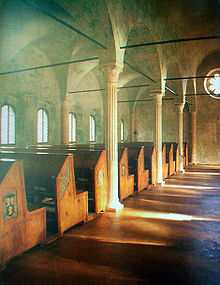
During the Late Antiquity and Middle Ages periods, there was no Rome of the kind that ruled the Mediterranean for centuries and spawned the culture that produced twenty-eight public libraries in the urbs Roma.[28] The empire had been divided then later re-united again under Constantine the Great who moved the capital of the Roman Empire in 330 AD to the city of Byzantium which was renamed Constantinople.[29] The Roman intellectual culture that flourished in ancient times was undergoing a transformation as the academic world moved from laymen to Christian clergy.[30] As the West crumbled, books and libraries flourished and flowed east toward the Byzantine Empire.[31] There, four different types of libraries were established: imperial, patriarchal, monastic, and private.[32] Each had it own purpose and, as a result, their survival varied.
Christianity was a new force in Europe and many of the faithful saw Hellenistic culture as pagan. As such, many classical Greek works, written on scrolls, were left to decay as only Christian texts were thought fit for preservation in a codex, the progenitor of the modern book.[33] In the East, however, this was not the case as many of these classical Greek and Roman texts were copied.[34]
In Byzantium, much of this work devoted to preserving Hellenistic thought in codex form was performed in scriptoriums by monks.[35] While monastic library scriptoriums flourished throughout the East and West, the rules governing them were generally the same [36] Barren and sun-lit rooms (because candles were a source of fire) were major features of the scriptorium that was both a model of production and monastic piety.[37] Monks scribbled away for hours a day, interrupted only by meals and prayers.[38] With such production, medieval monasteries began to accumulate large libraries. These libraries were devoted solely to the education of the monks and were seen as essential to their spiritual development.[39] Although most of these texts that were produced were Christian in nature, many monastic leaders saw common virtues in the Greek classics. As a result, many of these Greek works were copied, and thus saved, in monastic scriptoriums.[40]
When Europe passed into the Dark Ages, Byzantine scriptoriums laboriously preserved Greco-Roman classics. As a result, Byzantium revived Classical models of education and libraries.[41] The Imperial Library of Constantinople was an important depository of ancient knowledge. Constantine himself wanted such a library but his short rule denied him the ability to see his vision to fruition. His son Constantius II made this dream a reality and created an imperial library in a portico of the royal palace.[42] He ruled for 24 years and accelerated the development of the library and the intellectual culture that came with such a vast accumulation of books.[43]
Constantius II appointed Themistius, a pagan philosopher and teacher, as chief architect of this library building program. Themistius set about a bold program to create an imperial public library that would be the centerpiece of the new intellectual capital of Constantinople.[44] Classical authors such as Plato, Aristotle, Demosthenes, Isocrates, Thucydides, Homer, and Zeno were sought. Themeistius hired calligraphers and craftsman to produce the actual codices. He also appointed educators and created a university-like school centered around the library.[45]
After the death of Constantius II, Julian the Apostate, a bibliophile intellectual, ruled briefly for less than three years. Despite this, he had a profound impact on the imperial library and sought both Christian and pagan books for its collections.[42] Later, the Emperor Valens hired Greek and Latin scribes full-time with from the royal treasury to copy and repair manuscripts.[46]
At its height in the 5th century, the Imperial Library of Constantinople had 120,000 volumes and was the largest library in Europe.[47] A fire in 477 consumed the entire library but it was rebuilt only to be burned again in 726, 1204, and in 1453 when Constantinople fell to the Ottoman Turks.[48]
Patriarchal libraries fared no better, and sometimes worse, than the Imperial Library. The Library of the Patriarchate of Constantinople was founded most likely during the reign of Constantine the Great in the 4th century.[49] As a theological library, it was known to have employed a library classification system.[50] It also served as a repository of several ecumenical councils such as the Council of Nicea, Council of Ephesus, and the Council of Chalcedon. The library, which employed a librarian and assistants, may have been originally located in the Patriarch’s official residence before it was moved to the Thomaites Triclinus in the 7th century. While much is not known about the actual library itself, it is known that many of its contents were subject to destruction as religious in-fighting ultimately resulted in book burnings.[51]
During this period, small private libraries existed. Many of these were owned by church members and the aristocracy.[52] Teachers also were known to have small personal libraries as well as wealthy bibliophiles who could afford the highly ornate books of the period.[53]
Thus, in the 6th century, at the close of the Classical period, the great libraries of the Mediterranean world remained those of Constantinople and Alexandria. Cassiodorus, minister to Theodoric, established a monastery at Vivarium in the toe of Italy (modern Calabria) with a library where he attempted to bring Greek learning to Latin readers and preserve texts both sacred and secular for future generations. As its unofficial librarian, Cassiodorus not only collected as many manuscripts as he could, he also wrote treatises aimed at instructing his monks in the proper uses of reading and methods for copying texts accurately. In the end, however, the library at Vivarium was dispersed and lost within a century.
Through Origen and especially the scholarly presbyter Pamphilus of Caesarea, an avid collector of books of Scripture, the theological school of Caesarea won a reputation for having the most extensive ecclesiastical library of the time, containing more than 30,000 manuscripts: Gregory Nazianzus, Basil the Great, Jerome and others came and studied there.
Islamic lands
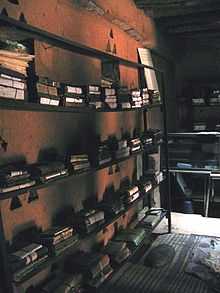
The first libraries in Muslim lands were not necessarily for the public, but they contained much knowledge. The need for the preservation of the Quran, the Muslim Holy Book, and the Traditions of the Muhammad, the Prophet of Islam is what led to the collection of writings in the Muslim world. Where traditions and history used to be oral, the need to preserve the words of the Quran necessitated a method of preserving the words in something other than orally. Mosques that were the center of everything in an Muslim societies day to day life became also libraries that stored and preserved all knowledge, from the Quran to books on religion, philosophy and science. “Under the Abbasids, Muslims formed the vanguard of civilization. The Abbasids were influenced by the Quran and Hadith such as, "the ink of scholar is equal to the blood of martyr,[54]" stressing the value of knowledge.” With the passion of the Caliphs to establish centers of knowledge, the Muslim world quickly began to have different centers that housed libraries which contained encyclopedias, translations, commentaries and treatises written by Muslim philosophers, scholars and scientists. With the discovery of paper, the Muslim world quickly began to progress in its development of libraries, and “libraries (royal, public, specialised, private) had become common and bookmen (authors, translators, copiers, illuminators, librarians, booksellers' collectors) from all classes and sections of society, of all nationalities and ethnic backgrounds, vied with each other in the production and distribution of books.[55]”
By the 8th century first Iranians and then Arabs had imported the craft of papermaking from China, with a paper mill already at work in Baghdad in 794. By the 9th century public libraries started to appear in many Islamic cities. They were called "halls of Science" or dar al-'ilm. They were each endowed by Islamic sects with the purpose of representing their tenets as well as promoting the dissemination of secular knowledge. The 9th-century Abbasid Caliph al-Mutawakkil of Iraq, ordered the construction of a "zawiyat qurra" – an enclosure for readers which was "lavishly furnished and equipped". In Shiraz Adhud al-Daula (d. 983) set up a library, described by the medieval historian, al-Muqaddasi, as "a complex of buildings surrounded by gardens with lakes and waterways. The buildings were topped with domes, and comprised an upper and a lower story with a total, according to the chief official, of 360 rooms.... In each department, catalogues were placed on a shelf... the rooms were furnished with carpets".[56] The libraries often employed translators and copyists in large numbers, in order to render into Arabic the bulk of the available Persian, Greek, Roman and Sanskrit non-fiction and the classics of literature.
This flowering of Islamic learning ceased centuries later when learning began declining in the Islamic world, after many of these libraries were destroyed by Mongol invasions. Others were victim of wars and religious strife in the Islamic world. However, a few examples of these medieval libraries, such as the libraries of Chinguetti in West Africa, remain intact and relatively unchanged. Another ancient library from this period which is still operational and expanding is the Central Library of Astan Quds Razavi in the Iranian city of Mashhad, which has been operating for more than six centuries.
The contents of these Islamic libraries were copied by Christian monks in Muslim/Christian border areas, particularly Spain and Sicily. From there they eventually made their way into other parts of Christian Europe. These copies joined works that had been preserved directly by Christian monks from Greek and Roman originals, as well as copies Western Christian monks made of Byzantine works. The resulting conglomerate libraries are the basis of every modern library today.
Buddhist scriptures, educational materials, and histories were stored in libraries in pre-modern Southeast Asia. In Burma, a royal library called the Pitaka Taik was legendarily founded by King Anawrahta;[57] in the 18th century, British envoy Michael Symes, on visiting this library, wrote that "it is not improbable that his Birman majesty may possess a more numerous library than any potentate, from the banks of the Danube to the borders of China". In Thailand libraries called ho trai were built throughout the country, usually on stilts above a pond to prevent bugs from eating at the books.
European Middle Ages
In the Early Middle Ages, monastery libraries developed, such as the important one at the Abbey of Montecassino in Italy.[58] Books were usually chained to the shelves, reflecting the fact that manuscripts, which were created via the labour-intensive process of hand copying, were valuable possessions.[59]
Despite this protectiveness, many libraries loaned books if provided with security deposits (usually money or a book of equal value). Lending was a means by which books could be copied and spread. In 1212 the council of Paris condemned those monasteries that still forbade loaning books, reminding them that lending is "one of the chief works of mercy."[60] The early libraries located in monastic cloisters and associated with scriptoria were collections of lecterns with books chained to them. Shelves built above and between back-to-back lecterns were the beginning of bookpresses. The chain was attached at the fore-edge of a book rather than to its spine. Book presses came to be arranged in carrels (perpendicular to the walls and therefore to the windows) in order to maximize lighting, with low bookcases in front of the windows. This "stall system" (i.e. fixed bookcases perpendicular to exterior walls pierced by closely spaced windows) was characteristic of English institutional libraries. In European libraries, bookcases were arranged parallel to and against the walls. This "wall system" was first introduced on a large scale in Spain's El Escorial.
Also, in Eastern Christianity monastery libraries kept important manuscripts. The most important of them were the ones in the monasteries of Mount Athos for Orthodox Christians, and the library of the Saint Catherine's Monastery in the Sinai Peninsula, Egypt for the Coptic Church.
Renaissance
From the 15th century in central and northern Italy, libraries of humanists and their enlightened patrons provided a nucleus around which an "academy" of scholars congregated in each Italian city of consequence. Malatesta Novello, lord of Cesena, founded the Malatestiana Library. Cosimo de Medici in Florence established his own collection, which formed the basis of the Laurentian Library.[61] In Rome, the papal collections were brought together by Pope Nicholas V, in separate Greek and Latin libraries, and housed by Pope Sixtus IV, who consigned the Bibliotheca Apostolica Vaticana to the care of his librarian, the humanist Bartolomeo Platina in February 1475.[62]
In the 16th century Sixtus V bisected Bramante's Cortile del Belvedere with a cross-wing to house the Apostolic Library in suitable magnificence. The 16th and 17th centuries saw other privately endowed libraries assembled in Rome: the Vallicelliana, formed from the books of Saint Filippo Neri, with other distinguished libraries such as that of Cesare Baronio, the Biblioteca Angelica founded by the Augustinian Angelo Rocca, which was the only truly public library in Counter-Reformation Rome; the Biblioteca Alessandrina with which Pope Alexander VII endowed the University of Rome; the Biblioteca Casanatense of the Cardinal Girolamo Casanate; and finally the Biblioteca Corsiniana founded by the bibliophile Clement XII Corsini and his nephew Cardinal Neri Corsini, still housed in Palazzo Corsini in via della Lungara. The Republic of Venice patronized the foundation of the Biblioteca Marciana, based on the library of Cardinal Basilios Bessarion. In Milan Cardinal Federico Borromeo founded the Biblioteca Ambrosiana.
This trend soon spread outside of Italy, for example Louis III, Elector Palatine founded the Bibliotheca Palatina of Heidelberg.
These libraries don't have as many volumes as the modern libraries. However, they keep many valuable manuscripts of Greek, Latin and Biblical works.
Tianyi Chamber, founded in 1561 by Fan Qin during the Ming Dynasty, is the oldest existing library in China. In its heyday it boasted a collection of 70,000 volumes of antique books.
Enlightenment era libraries
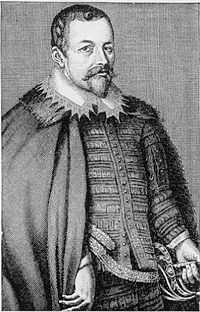
The 17th and 18th centuries include what is known as a golden age of libraries;[63] during this some of the more important libraries were founded in Europe. Francis Trigge Chained Library of St. Wulfram's Church, Grantham, Lincolnshire was founded in 1598 by the rector of nearby Welbourne.[64] Thomas Bodley founded the Bodleian Library, which was open to the "whole republic of the learned", Norwich City library was established in 1608[65] and the British Library was established in 1753. Chetham's Library in Manchester, which claims to be the oldest public library in the English-speaking world, opened in 1653.[66] Other early town libraries of the UK include those of Ipswich (1612), Bristol (founded in 1613 and opened in 1615), and Leicester (1632). Shrewsbury School also opened its library to townsfolk.[67]
The Bibliothèque Mazarine was initially the personal library of cardinal Mazarin (1602–1661), who was a great bibliophile. His first library, arranged by his librarian, Gabriel Naudé, was dispersed when he had to flee Paris during the Fronde. He then began a second library with what was left of the first, assisted by the successor to Naudé, François de La Poterie. At his death he bequeathed his library, which he had opened to scholars since 1643, to the Collège des Quatre-Nations which he had founded in 1661. The Bibliothèque Sainte-Geneviève was also founded in Paris, the Austrian National Library in Vienna, the National Central Library in Florence, the Prussian State Library in Berlin, the Załuski Library in Warsaw and the M.E. Saltykov-Shchedrin State Public Library in St Petersburg.[68]
At the start of the 18th century, libraries were becoming increasingly public and were more frequently lending libraries. The 18th century saw the switch from closed parochial libraries to lending libraries. Before this time, public libraries were parochial in nature and libraries frequently chained their books to desks.[69] Libraries also were not uniformly open to the public.[70]
Even though the British Museum existed at this time and contained over 50,000 books, the national library was not open to the public, or even to a majority of the population. Access to the Museum depended on passes, of which there was sometimes a waiting period of three to four weeks. Moreover, the library was not open to browsing. Once a pass to the library had been issued, the reader was taken on a tour of the library. Many readers complained that the tour was much too short.[71]
Subscription libraries
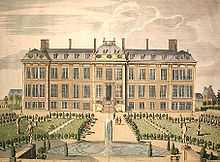
At the start of the 19th century, there were virtually no public libraries in the sense in which we now understand the term i.e. libraries provided from public funds and freely accessible to all.[72] Only one important library in Britain, namely Chetham's Library in Manchester, was fully and freely accessible to the public.[72] However, there had come into being a whole network of library provision on a private or institutional basis.
The increase in secular literature at this time encouraged the spread of lending libraries, especially the commercial subscription libraries. Many small, private book clubs evolved into subscription libraries, charging high annual fees or requiring subscribing members to purchase shares in the libraries. The materials available to subscribers tended to focus on particular subject areas, such as biography, history, philosophy, theology, and travel, rather than works of fiction, particularly the novel.
Unlike a public library, access was often restricted to members. Some of the earliest such institutions were founded in late 17th century England, such as Chetham's Library in 1653, Innerpeffray Library in 1680 and Thomas Plume's Library in 1704. In the American colonies, the Library Company of Philadelphia was started in 1731 by Benjamin Franklin in Philadelphia, PA.
The increasing production and demand for fiction promoted by commercial markets led to the rise of circulating libraries, which met a need that subscription libraries did not fulfil. William Bathoe claimed that his commercial venture was ‘the Original Circulating library’, opening doors at two locations in London in 1737.[73][74] Circulating libraries also charged subscription fees to users and offered serious subject matter as well as the popular novels, thus the difficulty in clearly distinguishing circulating from subscription libraries.[75]

Subscription libraries were democratic in nature; created by and for communities of local subscribers who aimed to establish permanent collections of books and reading materials, rather than selling their collections annually as the circulating libraries tended to do, in order to raise funds to support their other commercial interests. Even though the subscription libraries were often founded by reading societies, committees, elected by the subscribers, chose books for the collection that were general, rather than aimed at a particular religious, political or professional group. The books selected for the collection were chosen because they would be mutually beneficial to the shareholders. The committee also selected the librarians who would manage the circulation of materials.[76]
In Britain there were more than 200 commercial circulating libraries open in 1800, more than twice the number of subscription and private proprietary libraries that were operating at the same time. Many proprietors pandered to the most fashionable clientele, making much ado about the sort of shop they offered, the lush interiors, plenty of room and long hours of service.[73] "These 'libraries' would be called rental collections today."[77]
Private libraries

Private subscription libraries functioned in much the same manner as commercial subscription libraries, though they varied in many important ways. One of the most popular versions of the private subscription library was a gentleman's only library. Membership was restricted to the proprietors or shareholders, and ranged from a dozen or two to between four and five hundred.[78]
The Liverpool Subscription library was a gentlemen only library. In 1798, it was renamed the Athenaeum when it was rebuilt with a newsroom and coffeehouse. It had an entrance fee of one guinea and annual subscription of five shillings.[79] An analysis of the registers for the first twelve years provides glimpses of middle-class reading habits in a mercantile community at this period. The largest and most popular sections of the library were History, Antiquities, and Geography, with 283 titles and 6,121 borrowings, and Belles Lettres, with 238 titles and 3,313 borrowings.[80][81]

Private subscription libraries held a greater amount of control over both membership and the types of books in the library. There was almost a complete elimination of cheap fiction in the private societies.[82] Subscription libraries prided themselves on respectability. The highest percentage of subscribers were often landed proprietors, gentry, and old professions.[83]
Towards the end of the 18th century and in the first decades of the nineteenth the need for books and general education made itself felt among social classes created by the beginnings of the Industrial Revolution.[84] The late 18th century saw a rise in subscription libraries intended for the use of tradesmen. In 1797, there was established at Kendal what was known as the Economical Library, "designed principally for the use and instruction of the working classes."[85] There was also the Artizans' library established at Birmingham in 1799. The entrance fee was 3 shillings. The subscription was 1 shilling 6 pence per quarter. This was a library of general literature. Novels, at first excluded, were afterwards admitted on condition that they did not account for more than one-tenth of the annual income.[78]
National libraries
Origins
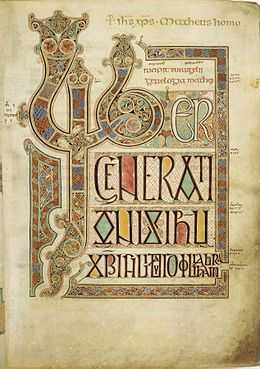
The first national libraries had their origins in the royal collections of the sovereign or some other supreme body of the state.
One of the first plans for a national library was devised by the Welsh mathematician John Dee, who in 1556 presented Mary I of England with a visionary plan for the preservation of old books, manuscripts and records and the founding of a national library, but his proposal was not taken up.[86]
In England, Sir Richard Bentley's Proposal for Building a Royal Library published in 1694 stimulated renewed interest in the subject. Sir Robert Cotton, 1st Baronet, of Connington, a wealthy antiquarian, amassed the richest private collection of manuscripts in the world at the time and founded the Cotton Library. After the Dissolution of the Monasteries, many priceless and ancient manuscripts that had belonged to the monastic libraries began to be disseminated among various owners, many of whom were unaware of the cultural value of the manuscripts. Sir Robert's genius was in finding, purchasing and preserving these ancient documents.[87] After his death his grandson donated the library to the nation as its first national library. This transfer established the formation of the British Library.[88][89]
National libraries
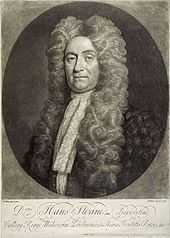
The first true national library was founded in 1753 as part of the British Museum. This new institution was the first of a new kind of museum – national, belonging to neither church nor king, freely open to the public and aiming to collect everything.[90] The museum's foundations lay in the will of the physician and naturalist Sir Hans Sloane, who gathered an enviable collection of curiosities over his lifetime which he bequeathed to the nation for £20,000.[91]
Sloane's collection included some 40,000 printed books and 7,000 manuscripts, as well as prints and drawings.[92] The British Museum Act 1753 also incorporated the Cotton library and the Harleian library. These were joined in 1757 by the Royal Library, assembled by various British monarchs.[93]
The first exhibition galleries and reading room for scholars opened on 15 January 1759,[94] and in 1757, King George II granted it the right to a copy of every book published in the country, thereby ensuring that the Museum's library would expand indefinitely.

Anthony Panizzi became the Principal Librarian at the British Library in 1856, where he oversaw its modernization. During his tenure, the Library's holdings increased from 235,000 to 540,000 volumes, making it the largest library in the world at the time. Its famous circular Reading Room was opened in 1857. Panizzi undertook the creation of a new catalogue, based on the "Ninety-One Cataloguing Rules" (1841) which he devised with his assistants. These rules served as the basis for all subsequent catalogue rules of the 19th and 20th centuries, and are at the origins of the ISBD and of digital cataloguing elements such as Dublin Core.
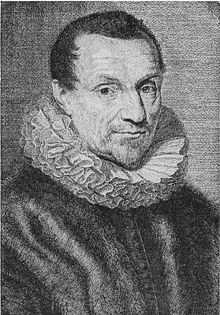
In France, the first national library was the Bibliothèque Mazarine, which evolved from its origin as a royal library founded at the Louvre Palace by Charles V in 1368. At the death of Charles VI, this first collection was unilaterally bought by the English regent of France, the Duke of Bedford, who transferred it to England in 1424. It was apparently dispersed at his death in 1435.[95][96] The invention of printing resulted in the starting of another collection in the Louvre inherited by Louis XI in 1461.[97] Francis I transferred the collection in 1534 to Fontainebleau and merged it with his private library.
The appointment of Jacques Auguste de Thou as librarian in the 17th century, initiated a period of development that made it the largest and richest collection of books in the world. [96] The library opened to the public in 1692, under the administration of Abbé Louvois, Minister Louvois's son. Abbé Louvois was succeeded by the Abbé Bignon, or Bignon II as he was termed, who instituted a complete reform of the library's system. Catalogues were made which appeared from 1739–53 in 11 volumes. The collections increased steadily by purchase and gift to the outbreak of the French Revolution, at which time it was in grave danger of partial or total destruction, but owing to the activities of Antoine-Augustin Renouard and Joseph Van Praet it suffered no injury.[96]
The library's collections swelled to over 300,000 volumes during the radical phase of the French Revolution when the private libraries of aristocrats and clergy were seized. After the establishment of the French First Republic in September 1792, "the Assembly declared the Bibliotheque du Roi to be national property and the institution was renamed the Bibliothèque Nationale. After four centuries of control by the Crown, this great library now became the property of the French people."[95]
Expansion
In the newly formed American republic, James Madison first proposed instituting a congressional library in 1783.[98] The Library of Congress was established on April 24, 1800, when president John Adams signed an act of Congress providing for the transfer of the seat of government from Philadelphia to the new capital city of Washington. Part of the legislation appropriated $5,000 "for the purchase of such books as may be necessary for the use of Congress ..., and for fitting up a suitable apartment for containing them...." Books were ordered from London and the collection, consisting of 740 books and 3 maps, was housed in the new Capitol.[99]

The Imperial Public Library was established in 1795 by Catherine the Great, whose private collections included the domestic libraries of Voltaire and Diderot, which she had purchased from their heirs. Voltaire's personal library is still one of the highlights of the collection. The plan of a Russian public library was submitted to Catherine in 1766 but the Empress did not approve the project for the imperial library until 27 May [O.S. 16 May] 1795, eighteen months before her death. The cornerstone of the foreign-language department came from the Polish-Lithuanian Commonwealth in the form of Załuski's Library (420,000 volumes), nationalized by the Russian government at the time of the partitions.[100] The Polish-language books from the library (numbering some 55,000 titles) were returned to Poland by the Russian SFSR in 1921.[101]
Although Germany was only constituted as a state in 1871, the first national library was set up in the context of the German revolutions of 1848. Various booksellers and publishers offered their works to the Frankfurt Parliament for a parliamentary library. The library, led by Johann Heinrich Plath, was termed the Reichsbibliothek ("Reich library"). After the failure of the revolution the library was abandoned and the stock of books already in existence was stored at the Germanisches Nationalmuseum in Nuremberg.[102] In 1912, the town of Leipzig, seat of the annual Leipzig Book Fair, the Kingdom of Saxony and the Börsenverein der Deutschen Buchhändler (Association of German booksellers) agreed to found a German National Library in Leipzig. Starting January 1, 1913, all publications in German were systematically collected (including books from Austria and Switzerland).
The modern public library
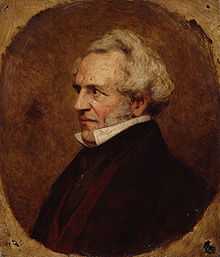
Although by the mid-19th century, England could claim 274 subscription libraries and Scotland, 266, the foundation of the modern public library system in Britain is the Public Libraries Act 1850. The Act first gave local boroughs the power to establish free public libraries and was the first legislative step toward the creation of an enduring national institution that provides universal free access to information and literature. In the 1830s, at the height of the Chartist movement, there was a general tendency towards reformism in the United Kingdom. The Capitalist economic model had created a significant amount of free time for workers, and the middle classes were concerned that the workers’ free time was not being well-spent. This was prompted more by Victorian middle class paternalism rather than by demand from the lower social orders.[103] Campaigners felt that encouraging the lower classes to spend their free time on morally uplifting activities, such as reading, would promote greater social good.[104]
In 1835, and against government opposition, James Silk Buckingham, MP for Sheffield and a supporter of the temperance movement, was able to secure the Chair of the Select Committee which would examine "the extent, causes, and consequences of the prevailing vice of intoxication among the labouring classes of the United Kingdom" and propose solutions. Francis Place, a campaigner for the working class, agreed that "the establishment of parish libraries and district reading rooms, and popular lectures on subjects both entertaining and instructive to the community might draw off a number of those who now frequent public houses for the sole enjoyment they afford".[105] Buckingham introduced to Parliament a Public Institution Bill allowing boroughs to charge a tax to set up libraries and museums, the first of its kind. Although this did not become law, it had a major influence on William Ewart MP and Joseph Brotherton MP, who introduced a bill which would “[empower] boroughs with a population of 10,000 or more to raise a ½d for the establishment of museums”.[106] This became the Museums Act 1845.

The advocacy of Ewart and Brotherton then succeeded in having a select committee set up to consider public library provision. The Report argued that the provision of public libraries would steer people towards temperate and moderate habits. With a view to maximising the potential of current facilities, the Committee made two significant recommendations. They suggested that the government should issue grants to aid the foundation of libraries and that the Museums Act 1845 should be amended and extended to allow for a tax to be levied for the establishment of public libraries.[107][108][109] The Bill passed through Parliament as most MPs felt that public libraries would provide facilities for self-improvement through books and reading for all classes, and that the greater levels of education attained by providing public libraries would result in lower crime rates.
The earliest example in England of a library to be endowed for the benefit of users who were not members of an institution such as a cathedral or college was the Francis Trigge Chained Library in Grantham, Lincolnshire, established in 1598. The library still exists and can justifiably claim to be the forerunner of later public library systems. The beginning of the modern, free, open access libraries really got its start in the UK in 1847. Parliament appointed a committee, led by William Ewart, on Public Libraries to consider the necessity of establishing libraries through the nation: In 1849 their report noted the poor condition of library service, it recommended the establishment of free public libraries all over the country, and it led to the Public Libraries Act in 1850, which allowed all cities with populations exceeding 10,000 to levy taxes for the support of public libraries.
Salford Museum and Art Gallery first opened in November 1850 as "The Royal Museum & Public Library", as the first unconditionally free public library in England.[110][111] The library in Campfield, Manchester was the first library to operate a free lending library without subscription in 1852.[112] Norwich lays claims to being the first municipality to adopt the Public Libraries Act 1850 (which allowed any municipal borough with a population of 100,000 or more to introduce a halfpenny rate to establish public libraries—although not to buy books). Norwich was the eleventh library to open, in 1857, after Winchester, Manchester, Liverpool, Bolton, Kidderminster, Cambridge, Birkenhead and Sheffield.
Another important act was the Education Act 1870, which increased literacy and thereby the demand for libraries. By 1877, more than 75 cities had established free libraries, and by 1900 the number had reached 300.[113] This finally marks the start of the public library as we know it. And these acts influenced similar laws in other countries, such as the US. The first tax-supported public library in the United States was Peterborough, New Hampshire (1833) first supported by state funds then an "Act Providing for the Establishment of Public Libraries" in 1849.[114]
Expansion

The year 1876 is key in the history of librarianship in the United States. The American Library Association was formed, as well as The American Library Journal, Melvil Dewey published his decimal-based system of classification, and the United States Bureau of Education published its report, "Public libraries in the United States of America; their history, condition, and management." During the post-Civil War years, there was a rise in the establishment of public libraries, a movement led chiefly by newly formed women's clubs. They contributed their own collections of books, conducted lengthy fund raising campaigns for buildings, and lobbied within their communities for financial support for libraries, as well as with legislatures and the Carnegie Library Endowment founded in the 20th century.[115] They led the establishment of 75–80 percent of the libraries in communities across the country.[116]
Philanthropists and businessmen, including John Passmore Edwards, Henry Tate and Andrew Carnegie, helped to increase the number of public libraries from the late 19th century. Carnegie alone built over 2000 libraries in the US, 660 Carnegie Libraries in Britain, in addition to many more in the Commonwealth.[117]
20th Century
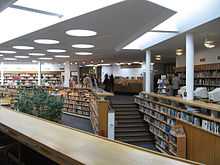
In the 20th Century, many public libraries were built in different Modernist architecture styles, some more functional, others more representative. For many of these buildings, the quality of the interior spaces, their lighting and atmosphere, was becoming more significant than the façade design of the library building. Modernist architects like Alvar Aalto put great emphasis on the comfort and usability of library spaces. The Municipal Library he built 1958-62 for the German city of Wolfsburg features a great central room for which he used a series of specially designed skylights to bring in natural light, even though all the walls are covered with books.
See also
- Library science
- Public libraries
References
- ↑ Casson, Lionel (11 August 2002). Libraries in the Ancient World. Yale University Press. p. 3. Retrieved 7 March 2012.
- ↑ 2.0 2.1 Krasner-Khait, Barbara (2010). "History Magazine". history-magazine.com. Retrieved 5 March 2012.
- ↑ Maclay, Kathleen (6 May 2003). "Clay cuneiform tablets from ancient Mesopotamia to be placed online". Retrieved 5 March 2012.
- ↑ Renfrew, Colin. Prehistory The Making Of The Human Mind, New York: Modern Library, 2008.
- ↑ Roberts, John Morris (17 July 1997). A short history of the world. Oxford University Press. p. 35. Retrieved 7 March 2012.
- ↑ The American International Encyclopedia, New York: J. J. Little & Ives, 1954; Volume IX
- ↑ ""Assurbanipal Library Phase 1", British Museum One". Britishmuseum.org. Retrieved 21 June 2013.
- ↑ "Epic of Creation", in Dalley, Stephanie. Myths from Mesopotamia. Oxford, 1989; pp. 233-81
- ↑ "Epic of Gilgamesh", in Dalley, Stephanie. Myths from Mesopotamia. Oxford, 1989; pp. 50–135
- ↑ Van De Mieroop, Marc. A History of the Ancient Near East ca. 3000–323 BC. Oxford, UK: Blackwell Publishing, 2007: pg. 263
- ↑ 11.0 11.1 Mukherjee, A. K. Librarianship: Its Philosophy and History. Asia Publishing House (1966) p. 86
- ↑ Cosmos: A Personal Voyage, Sagan, C 1980, "Episode 1: The Shores of the Cosmic Ocean"
- ↑ 13.0 13.1 13.2 Phillips, Heather A., "The Great Library of Alexandria?". Library Philosophy and Practice, August 2010
- ↑ Swain, Simon (2002). Dio Chrysostom: Politics, Letters, and Philosophy. Oxford University Press. p. 57. ISBN 9780199255214.
Nevertheless, in 92 the same office went to a Greek, Ti. Julius Celsus Polemaeanus, who belonged to a family of priests of Rome hailing from Sardis; entering the Senate under Vespasian, he was subsequently to be appointed proconsul of Asia under Trajan, possibly in 105/6. Celsus’ son, Aquila, was also to be made suffectus in 110, although he is certainly remembered more as the builder of the famous library his father envisioned for Ephesus.
- ↑ Nicols, John (1978). Vespasian and the partes Flavianae. Steiner. p. 109. ISBN 9783515023931.
Ti. Julius Celsus Polemaeanus (PIR2 J 260) was a romanized Greek of Ephesus or Sardes who became the first eastern consul.
- ↑ Strocka, Volke, M. (2003). The Celsus Library. Ancient libraries of Anatolia: libraries of Hatusha, Pergamon, Ephesus, Nysa.(Ankara): Middle East Technical University Library, 2003, pp. 33-43.
- ↑ Seneca, De tranquillitate animi ix.4–7.
- ↑ Casson, L. (2001). Libraries in the ancient world. New Haven: Yale University Press; Ewald, L. A. (2004). Library Culture in Ancient Rome, 100 B.C. – A.D. 400. Kentucky Libraries, 68(1), 9-11;Buchanan, S. (2012). Designing the Research Commons: Classical Models for School Libraries. School Libraries Worldwide, 18(1), 56-69.
- ↑ Ewald, 2004, p.9
- ↑ Casson, 2001, p. 80
- ↑ Casson, 2001, p. 81; Buchanan, 2012, p. 61
- ↑ Casson, 2001, p.84; Buchanan, 2012, pp. 61-62
- ↑ Ewald, 2004, p.10; Buchanan, 2012, p.62;Casson, p.61
- ↑ Houston, G. W. (2008). Tiberius and the Libraries: Public Book Collections and Library Buildings in the Early Roman Empire. Libraries & the Cultural Record, 43, 247-269.
- ↑ Zurndorfer, Harriet Thelma (1995). China bibliography: a research guide ... – Google Books. books.google.com.au. ISBN 978-90-04-10278-1. Retrieved 30 April 2010.
- ↑ Hur-Li Lee, "Epistemic foundation of bibliographic classification in early China: A Ru classicist perspective," Journal of Documentation (2012) 68#3 pp 378-401. pool will shiftonline
- ↑ "Stradavinisaporifc.it". Stradavinisaporifc.it. Retrieved 7 March 2010.
- ↑ Bischoff, B. and Gorman, M. (1994). Manuscripts and libraries in the age of Charlemagne. Cambridge: Cambridge University Press.
- ↑ Staikos, K. K. (2004). The history of the library in Western civilization. New Castle, Del.: Oak Knoll Press, p.12
- ↑ Staikos, 2007, p.8
- ↑ Murray, S.A.P.(2009). The Library: An illustrated history. New York: Sky Horse Publishing, p.24
- ↑ Papademetriou, G. C. (2000). "The Patriarchal libraries of Constantinople". Greek Orthodox Theological Review, 45(1-4), 171-190.
- ↑ Lyons, M. (2011). Books: A living history. London: Thames and Hudson, pp.35-36.
- ↑ Murray, 2009, p. 50
- ↑ Peterson, H. A. (2010). The genesis of monastic libraries. Libraries & the Cultural Record, 45(3), 320-332, p. 320.
- ↑ Murray, 2009; Peterson, 2010.
- ↑ Murray, 2009, pp. 36, -38
- ↑ Murray, 2009, p.36
- ↑ Peterson, 2010, p.329
- ↑ Peterson, 2010, pp. 330-331
- ↑ Thompson, J.W. (1957). The medieval library. New York: Hafner Publishing Co., p. 311.
- ↑ 42.0 42.1 Thompson, 1957, p. 312
- ↑ Staikos, 2007, pp. 30-31
- ↑ Stoikos, 2007, p. 33
- ↑ Staikos, 2007, pp. 32-33
- ↑ Thompson, 1957, pp. 312-313
- ↑ Thompson, 1957, p. 313
- ↑ Hillerbrand, H. J. (2006). On book burnings and book burners: Reflections on the power (and powerlessness) of ideas. Journal of the American Academy of Religion, (3), 593, p.603.
- ↑ Staikos, 2007, p. 43
- ↑ Staikos, 2007, p. 44
- ↑ Staikos, 2007, p. 44-45
- ↑ Staikos, 2007, p.429
- ↑ Thompson, 1957, pp.313-314
- ↑ Wani, Z. A., & Maqbol, T. (2012). The Islamic Era and Its Importance to Knowledge and the Development of Libraries. Library Philosophy & Practice, p. 207.
- ↑ Wani, Z. A., & Maqbol, T. (2012). The Islamic Era and Its Importance to Knowledge and the Development of Libraries. Library Philosophy & Practice, p. 208.
- ↑ Goeje, M. J. de, ed. (1906). "Al-Muqaddasi: Ahsan al-Taqasim". Bibliotheca geographorum Arabicorum (in Arabic) III. Leiden: E. J. Brill. p. 449.
- ↑ International dictionary of library histories, 29
- ↑ "Montecassino, one of the most important libraries in the world.". crossingitaly.net. 2012. Retrieved 6 March 2012.
- ↑ Streeter, Burnett Hillman (10 March 2011). The Chained Library. Cambridge University Press. Retrieved 6 March 2012.
- ↑ Geo. Haven Putnam (1962). Books and Their Makers in the Middle Ages. Hillary.
- ↑ Survivor: the History of the Library, history-magazine.com
- ↑ This section on Roman Renaissance libraries follows Kenneth M. Setton, "From Medieval to Modern Library" Proceedings of the American Philosophical Society 104.4, Dedication of the APS Library Hall, Autumn General Meeting, November 1959 (August 1960:371–390) p. 372 ff.
- ↑ Stockwell, Foster (2001). A history of information storage and retrieval. McFarland. p. 93. Retrieved 3 March 2012.
- ↑
- ↑ Anon. "Norwich City Library 1608 - 1737: The Minutes, Donation Book and Catalogue of Norwich City Library, Founded in 1608". Norfolk Record Society. Norfolk Record Society. Retrieved 18 November 2009.
- ↑ Anon. "Welcome to Chetham's Library". Chetham's Library Home page. Retrieved 18 November 2009.
- ↑ Hobson, Anthony "Open Shelves", TLS, 8 December 2006, 9.
- ↑ Stockwell, Foster (2000). A History of Information and Storage Retrieval. North Carolina: McFarland & Company. ISBN 0-7864-0840-5.
- ↑ Kelly, Thomas (1966) Early Public Libraries: a history of public libraries in Great Britain before 1850 London: Library Association; p. 94
- ↑ Predeek, Albert (1947) A History of Libraries in Great Britain and North America. Chicago: American Library Association; p. 58
- ↑ Battles, Matthew (2003) Library: an unquiet history; p. 121
- ↑ 72.0 72.1 Kelly, Thomas (1966); p. 185
- ↑ 73.0 73.1 Raven, James. "Libraries for sociability: the advance of subscription library." The Cambridge History Of Libraries In Britain And Ireland. 3 vols. New York: Cambridge University Press, 2006, p. 251.
- ↑ John Feltham. "Circulating Libraries". Picture of London, for 1807 (8th ed.). London: Richard Phillips.
- ↑ Eliot, Simon. "Circulating libraries in the Victorian age and after." The Cambridge History Of Libraries In Britain And Ireland. 3 vols. New York: Cambridge University Press, 2006, p. 125-126.
- ↑ Forster, Geoffrey, and Alan Bell. "The subscription libraries and their members." The Cambridge History Of Libraries In Britain And Ireland. 3 vols. New York: Cambridge University Press, 2006, p. 147-148.
- ↑ Michael H. Harris (1995), History of libraries in the western world, Metuchen, N.J: Scarecrow Press, ISBN 081082972X
- ↑ 78.0 78.1 Kelly, Thomas (1966); p. 128
- ↑ Kelly, Thomas (1966); p. 126
- ↑ Kelly, Thomas (1966); p. 133
- ↑ Kaufman, Paul. Libraries and Their Users. Page 29. The Library Association. 1969. Print.
- ↑ Kaufman, Paul (1969); p. 209
- ↑ Allan, David (2008); p. 68
- ↑ Irwin, Raymond (1964); p. 53
- ↑ Kelly, Thomas (1966); p. 127
- ↑ Fell-Smith, Charlotte (1909) John Dee: 1527–1608. London: Constable and Company Available online
- ↑ John Aikin. The Lives of John Selden, Esq., and Archbishop Usher; With Notices of the Principal English Men of Letters with Whom They Were Connected. 1812. p. 375.
- ↑ http://www.bl.uk/reshelp/findhelprestype/manuscripts/cottonmss/cottonmss.html
- ↑ 'An Act for the better settling and preserving the Library kept in the House at Westminster called Cotton House in the Name and Family of the Cottons for the Benefit of the Publick [Chapter VII. Rot. Parl. 12 § 13 Gul. III. p. 1. n. 7.]', Statutes of the Realm: volume 7: 1695-1701 (1820), pp. 642-643. URL: http://www.british-history.ac.uk/report.aspx?compid=46991
- ↑ Dunton, Larkin (1896). The World and Its People. Silver, Burdett. p. 38.
- ↑ "Creating a Great Museum: Early Collectors and The British Museum". Fathom. Retrieved 4 July 2010.
- ↑ "General history". British Museum. 14 June 2010. Retrieved 4 July 2010.
- ↑ Letter to Charles Long (1823), BMCE115/3,10. Scrapbooks and illustrations of the Museum. (Wilson, David, M.) (2002). The British Museum: A History. London: The British Museum Press, pg 346
- ↑ The British Museum Opened, History Today
- ↑ 95.0 95.1 Paul M. Priebe. "From Bibliothèque du Roi to Bibliothèque Nationale: The Creation of a State Library, 1789–1793." The Journal of Library History (1974–1987), Vol. 17, No. 4 (Fall, 1982)
- ↑ 96.0 96.1 96.2
 One or more of the preceding sentences incorporates text from a publication now in the public domain: Rines, George Edwin, ed. (1920). "National Library of France". Encyclopedia Americana.
One or more of the preceding sentences incorporates text from a publication now in the public domain: Rines, George Edwin, ed. (1920). "National Library of France". Encyclopedia Americana. - ↑ Konstantinos Staikos (2012), History of the Library in Western Civilization: From Petrarch to Michelangelo, New Castle, DE: Oak Knoll Press, ISBN 978-1-58456-182-8
- ↑ Murray, Stuart. The Library: An Illustrated History (New York, Skyhouse Publishing, 2012): 155.
- ↑ "Jefferson's Legacy • A Brief History of the Library of Congress". Library of Congress. March 6, 2006. Retrieved January 14, 2008.
- ↑ Малый энциклопедический словарь Брокгауза и Ефрона, published in the Imperial Russia in the early 1900s
- ↑ Great Soviet Encyclopedia, 3rd. edition
- ↑ Fabian, Bernhard, ed. (2003). "Reichsbibliothek von 1848". Handbuch der historischen Buchbestände in Deutschland. Hildesheim: Olms Neue Medien.
- ↑ McMenemy (2009), pp. 24-26
- ↑ "History of the Public Libraries Act".
- ↑ Select Committee on inquiry into drunkenness, Report (1834)
- ↑ Kelly & Kelly (1977), p. 77
- ↑ Minto (1932) chapters 3-4
- ↑ Murison (1971) chapter 2
- ↑ Hansard (1850) Col. 848
- ↑ "Eye witness in Manchester". Manchesteronline. Retrieved on 2008-09-05
- ↑ "1st In Salford". visitsalford.info. Retrieved 2008-01-19.
- ↑ "Anniversary of first public library". BBC News. September 5, 2002. Retrieved April 14, 2010.
- ↑ Harris, Michael H. (1984). The History of Libraries in the Western World. London: Scarecrow Press. ISBN 0-8108-1666-0.
- ↑ Shera, Jesse H. (1949). Foundations of the Public Library: The Origins of the Public Library Movement in New England, 1629-1855. Chicago: University of Chicago Press.
- ↑ Paula D. Watson, “Founding Mothers: The Contribution of Woman’s Organizations to Public Library Development in the United States”, Library Quarterly, Vol. 64, Issue 3, 1994, p.236
- ↑ Teva Scheer, “The “Praxis” Side of the Equation: Club Women and American Public Administration”, Administrative Theory & Praxis, Vol. 24, Issue 3, 2002, p.525
- ↑ Jones, Theodore (1997). Carnegie Libraries across America. Washington: Preservation Press. ISBN 0-471-14422-3.
- ↑ Das Alvar-Aalto-Kulturhaus auf der Website des Alvar Aalto Zentrums Deutschland e.V. Wolfsburg, retrieved Jan. 25, 2015
Further reading
- Black, Alistair. A New History of the English Public Library: Social and Intellectual Contexts, 1850-1914 (1996); The Public Library in Britain 1914-2000 (2000)
- Casson, Lionel. (2001) Libraries in the Ancient World (Yale University Press); 169 pp.
- Harris, Michael H. (1999). History of Libraries of the Western World (4th ed.). Scarecrow Press. ISBN 978-0-8108-7715-3.
- Harris, Michael H. ed. (1971) Reader in American Library History online edition; articles by scholars
- Hoare, Peter, ed. (3 vol. 2006) The Cambridge History of Libraries in Britain and Ireland, 2072 pages
- Hobson, Anthony. Great Libraries (1970), surveys 27 famous European libraries (and 5 American ones) in 300pp
- Krause, Louise Beerstecher (1898), Reading List on Library Buildings, Boston: Boston Book Company
- Lerner, Fred. (2nd ed. 2009) The Story of Libraries: From the Invention of Writing to the Computer Age
- Martin, Lowell A. (1998) Enrichment: A History of the Public Library in the United States in the Twentieth Century
- Stam, David H. (2 vol 2001). International dictionary of library histories. Taylor & Francis. Check date values in:
|date=(help), 1100pp; covers 122 major libraries in Europe, 59 in U.S, and 44 others, plus 47 thematic essays - Wedgeworth, Robert, et al. eds. (1993). World Encyclopedia of Library and Information Services (3rd ed.). American Library Association.
- Wiegand, Wayne A. and Donald G. Davis, Jr. (1994). Encyclopedia of Library History. Taylor & Francis.; covers 60 major libraries
